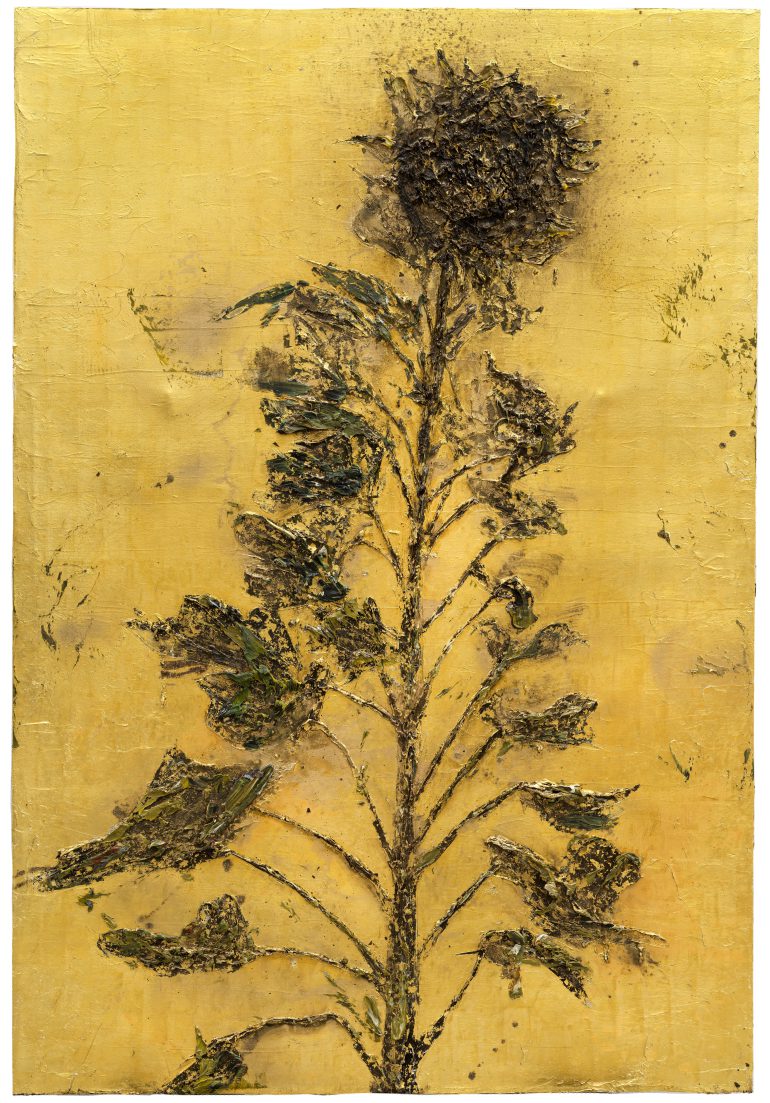Thanks to his idiosyncratic visual language, full of references to history, mythology and literature, Anselm Kiefer (1945) hasbecome one of the greatest artists of our time. His work is pleasing to the eye and stimulating for the brain. He thinks big,works on a monumental scale with unusual materials and does not shy away from asking the uncomfortable questions of life.During his solo exhibition at Voorlinden – on view from 14 October 2023 to 25 February 2024 – you can see his intriguingpaintings, sculptures, artists’ books and installations. Many of them have never been shown before.
Anselm Kiefer is a tireless polymath with an infinite number of interests. The artist is always looking for new insights and meanings. And this is clearly reflected in his layered work. In his work, he interweaves Germanic mythology, history, poetry, literature and philosophy.He uses traditional and unconventional materials, such as lead, bricks and bicycles. He exposes his works to the elements, sets them on fire, adds life-size objects or chisels away previously applied layers. In this way he creates true symphonies full of texture and meaning, on which he keeps working endlessly. Because for him, a work of art is actually never finished.
Anselm Kiefer: ‘Art is longing. You never arrive, but you keep going in the hope that you will.’
The world of Kiefer
Voorlinden created the exhibition in close collaboration with the artist himself. In Wassenaar, Anselm Kiefer is given every opportunity to showcase the breadth of his oeuvre and interests. The focus here is on his work from the past 15 years. In Voorlinden, you can wander through grand landscapes, past sculptures with multiple meanings and installations full of symbolism. You can analyse titles,quoted texts, techniques and materials in an attempt to solve Anselm Kiefer’s poetic riddles or simply wan- der through the world the artist presents to you.
Anselm Kiefer: ‘What does the artist do? He draws connections. He ties the invisible threads between things. He dives into history, be it the history of mankind, the geological history of the Earth or the beginning and end of the manifest cosmos.’
Very recent work
The exhibition at Voorlinden starts with a bookcase full of lead books and a planted cornfield. Next, you pass gigantic gold and lead paintings, whose depictions seem half chipped. You get lost in a room full of vitrines and then end up in a winter landscape brimming with references to romantic writers and thinkers. At the end, the exhibition returns to the book with a selection of artists’ books and some paintings Anselm Kiefer worked on as recently as last summer – and for which he used pages from his own diaries.
Director Suzanne Swarts: ‘At Voorlinden, you discover Anselm Kiefer as a playful man, a boundless artist who keeps exploring, breakingdown and building up. You even get an idea of what his studio looks like; the scale of the works, the diversity of the materials used, thebreadth of his passions and interests. You can immerse yourself in Kiefer’s world, as it were, at Voorlinden.’
Playing in ruins
Anselm Kiefer was born just before World War II ended. As a child, he played in the ruins of post-war Germany, building houses fromstones he found among the rubble. He never stopped building and demolishing after that. He was one of the first German artists to examine the recent history of his motherland in the late 1960s. Initially, he was met with a lot of criticism, but later specifically appre- ciated for exposing what remained unsaid. Over the past five decades, he has built up an oeuvre of stature and a large fan base thatfollows him closely. His work is included in important museum collections around the world and Voorlinden has several works in itscollection.
